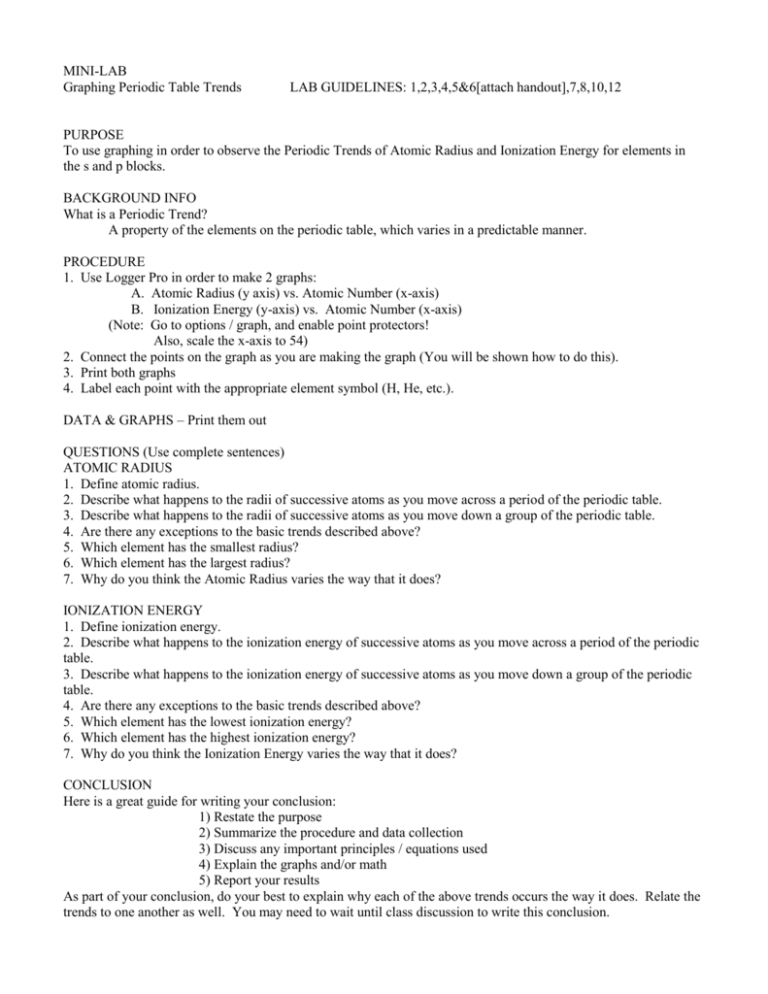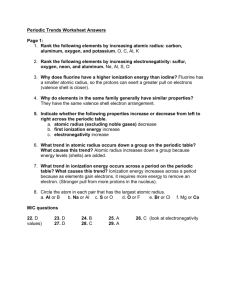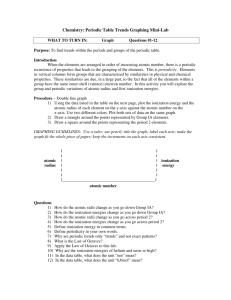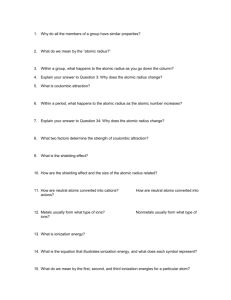Periodic Trends Graphing Lab -
advertisement

MINI-LAB Graphing Periodic Table Trends LAB GUIDELINES: 1,2,3,4,5&6[attach handout],7,8,10,12 PURPOSE To use graphing in order to observe the Periodic Trends of Atomic Radius and Ionization Energy for elements in the s and p blocks. BACKGROUND INFO What is a Periodic Trend? A property of the elements on the periodic table, which varies in a predictable manner. PROCEDURE 1. Use Logger Pro in order to make 2 graphs: A. Atomic Radius (y axis) vs. Atomic Number (x-axis) B. Ionization Energy (y-axis) vs. Atomic Number (x-axis) (Note: Go to options / graph, and enable point protectors! Also, scale the x-axis to 54) 2. Connect the points on the graph as you are making the graph (You will be shown how to do this). 3. Print both graphs 4. Label each point with the appropriate element symbol (H, He, etc.). DATA & GRAPHS – Print them out QUESTIONS (Use complete sentences) ATOMIC RADIUS 1. Define atomic radius. 2. Describe what happens to the radii of successive atoms as you move across a period of the periodic table. 3. Describe what happens to the radii of successive atoms as you move down a group of the periodic table. 4. Are there any exceptions to the basic trends described above? 5. Which element has the smallest radius? 6. Which element has the largest radius? 7. Why do you think the Atomic Radius varies the way that it does? IONIZATION ENERGY 1. Define ionization energy. 2. Describe what happens to the ionization energy of successive atoms as you move across a period of the periodic table. 3. Describe what happens to the ionization energy of successive atoms as you move down a group of the periodic table. 4. Are there any exceptions to the basic trends described above? 5. Which element has the lowest ionization energy? 6. Which element has the highest ionization energy? 7. Why do you think the Ionization Energy varies the way that it does? CONCLUSION Here is a great guide for writing your conclusion: 1) Restate the purpose 2) Summarize the procedure and data collection 3) Discuss any important principles / equations used 4) Explain the graphs and/or math 5) Report your results As part of your conclusion, do your best to explain why each of the above trends occurs the way it does. Relate the trends to one another as well. You may need to wait until class discussion to write this conclusion. LAB GUIDELINES: 1,2,3,4,5&6[attach handout],7,8,10,12








